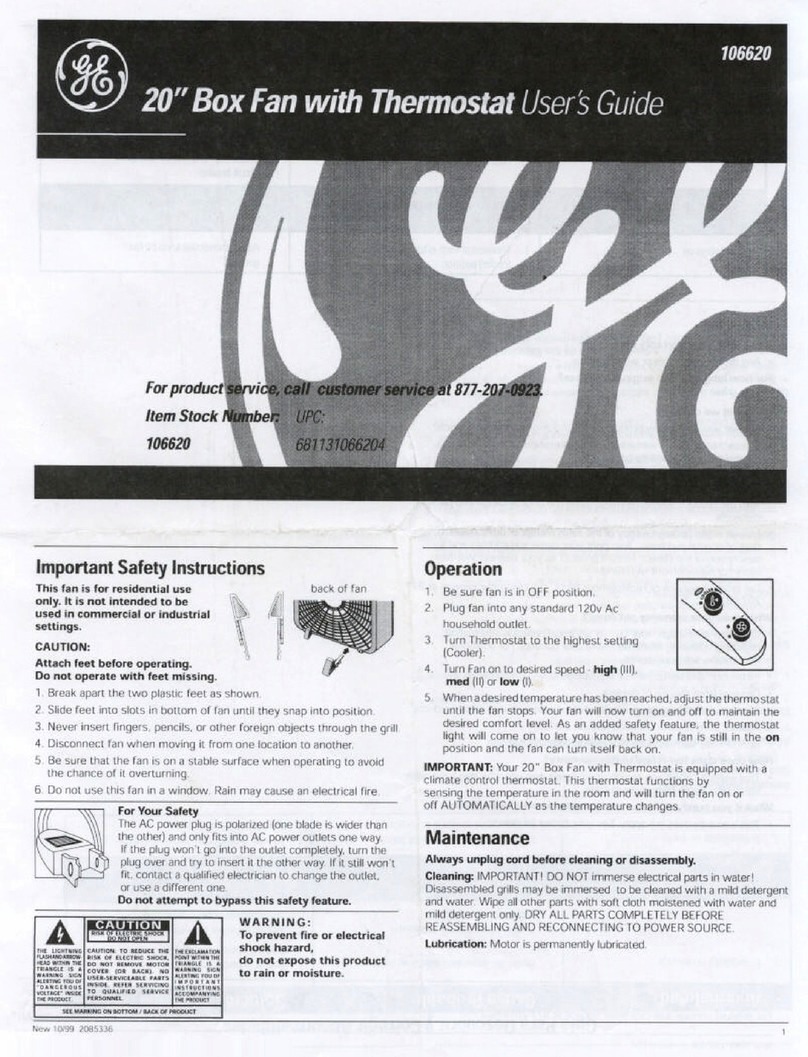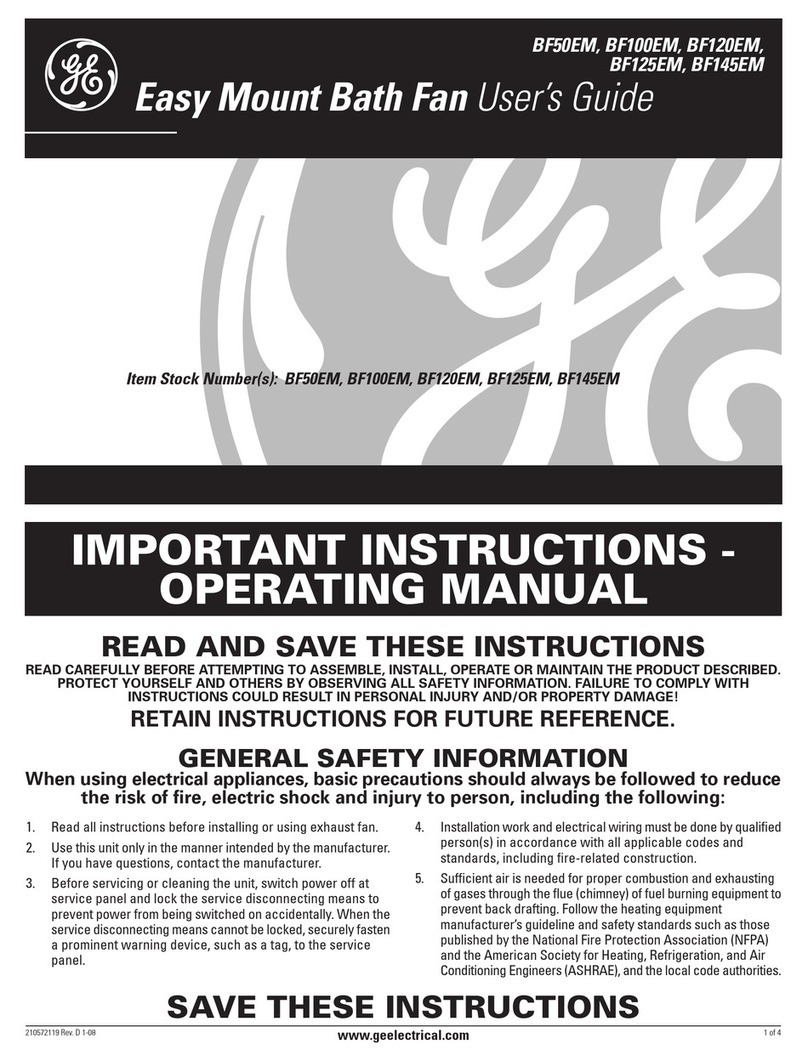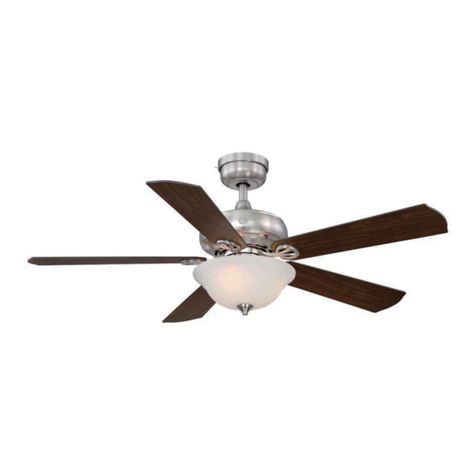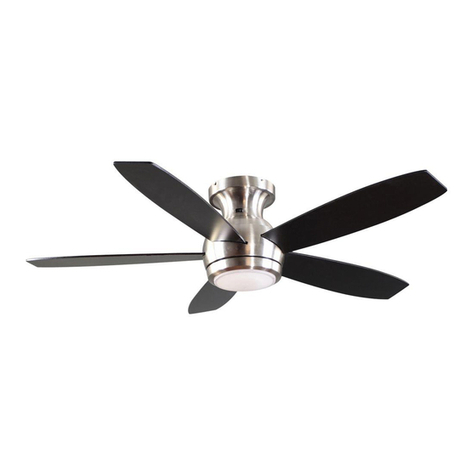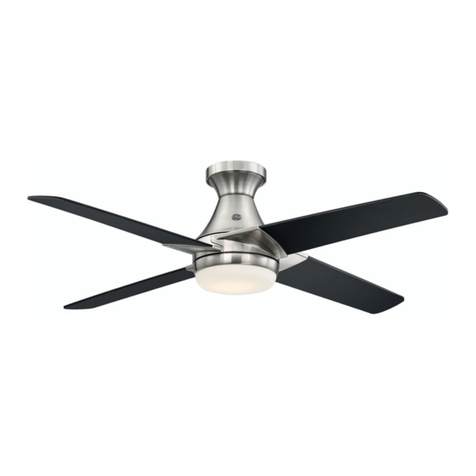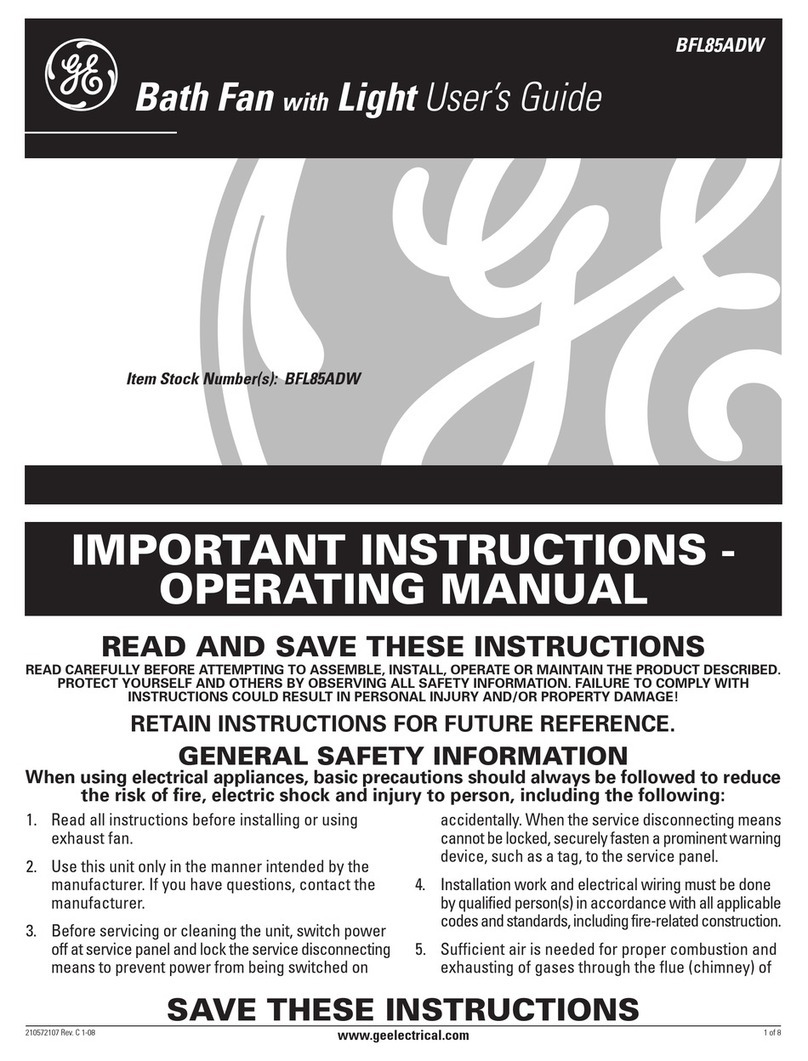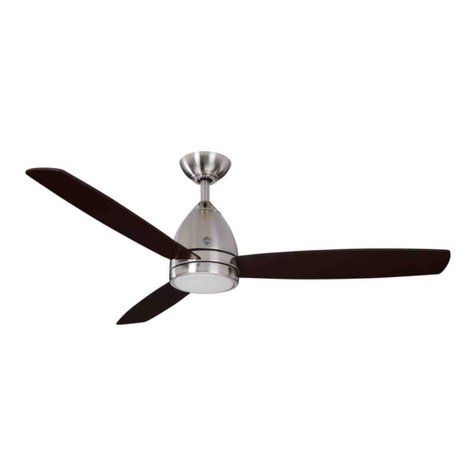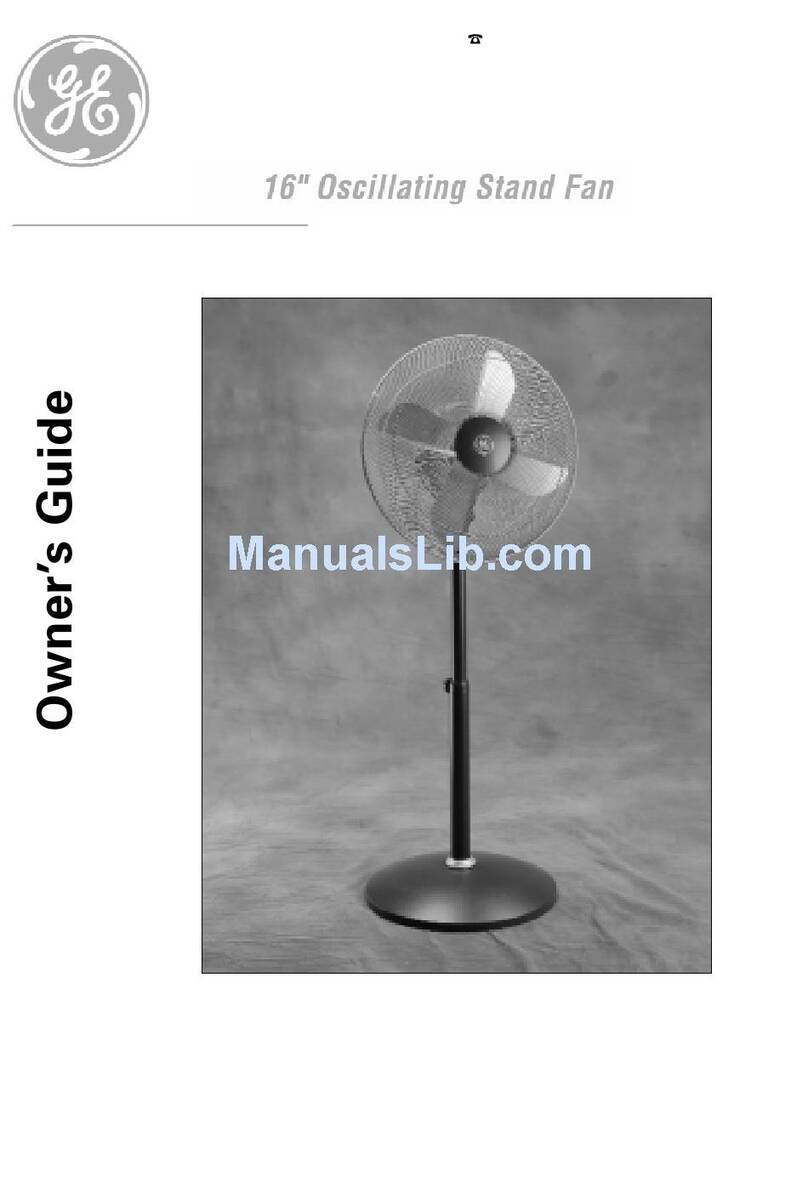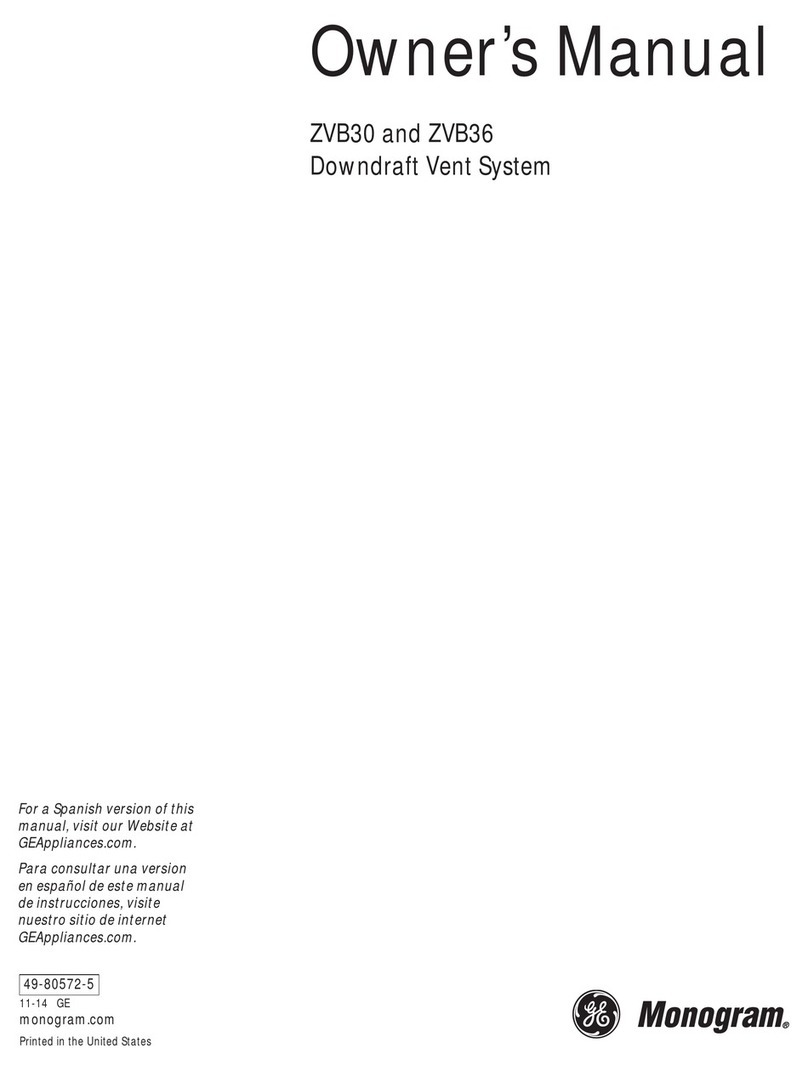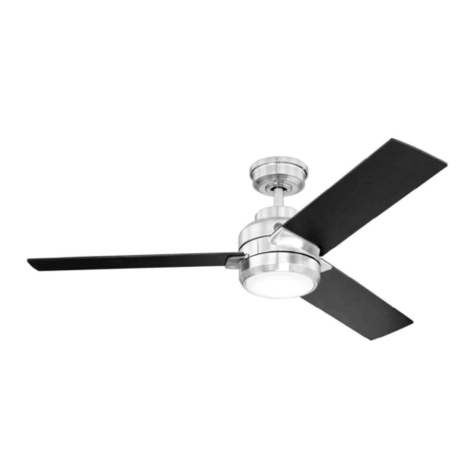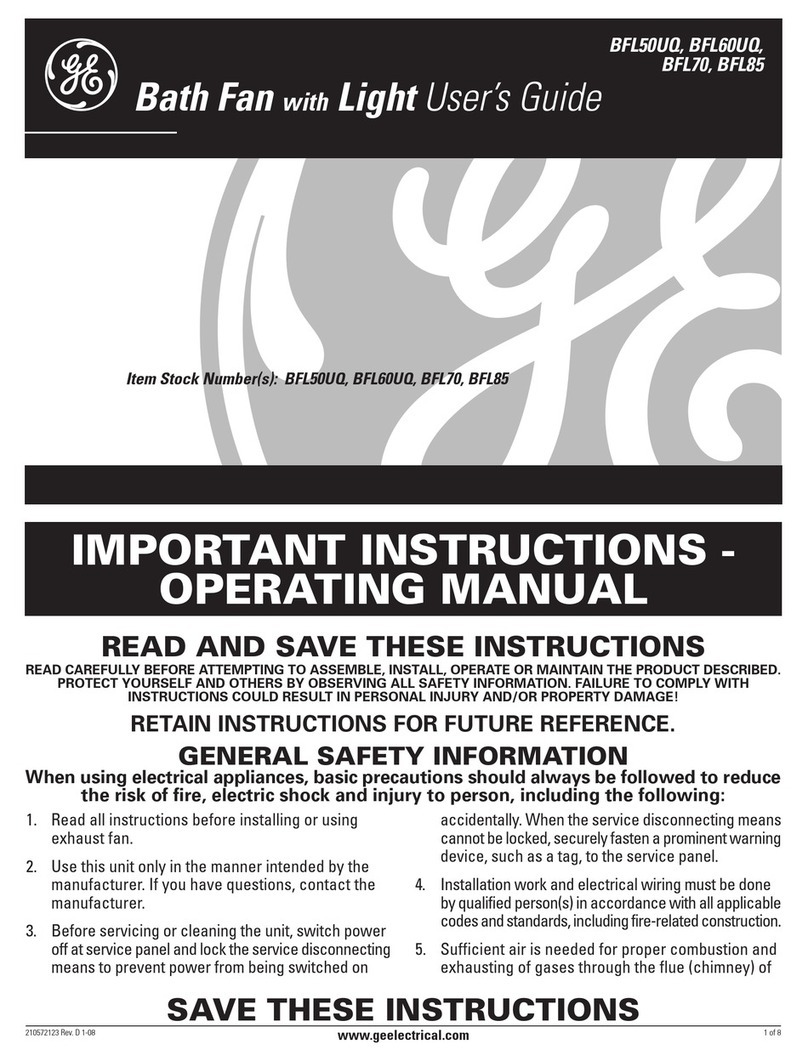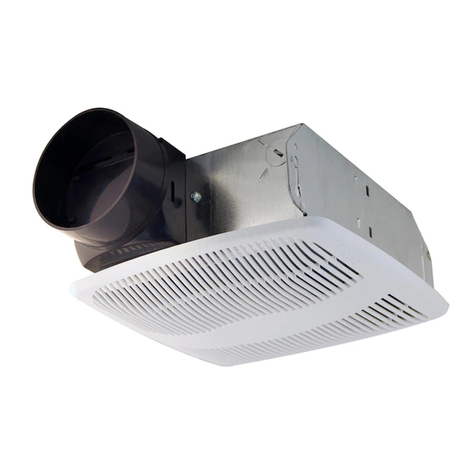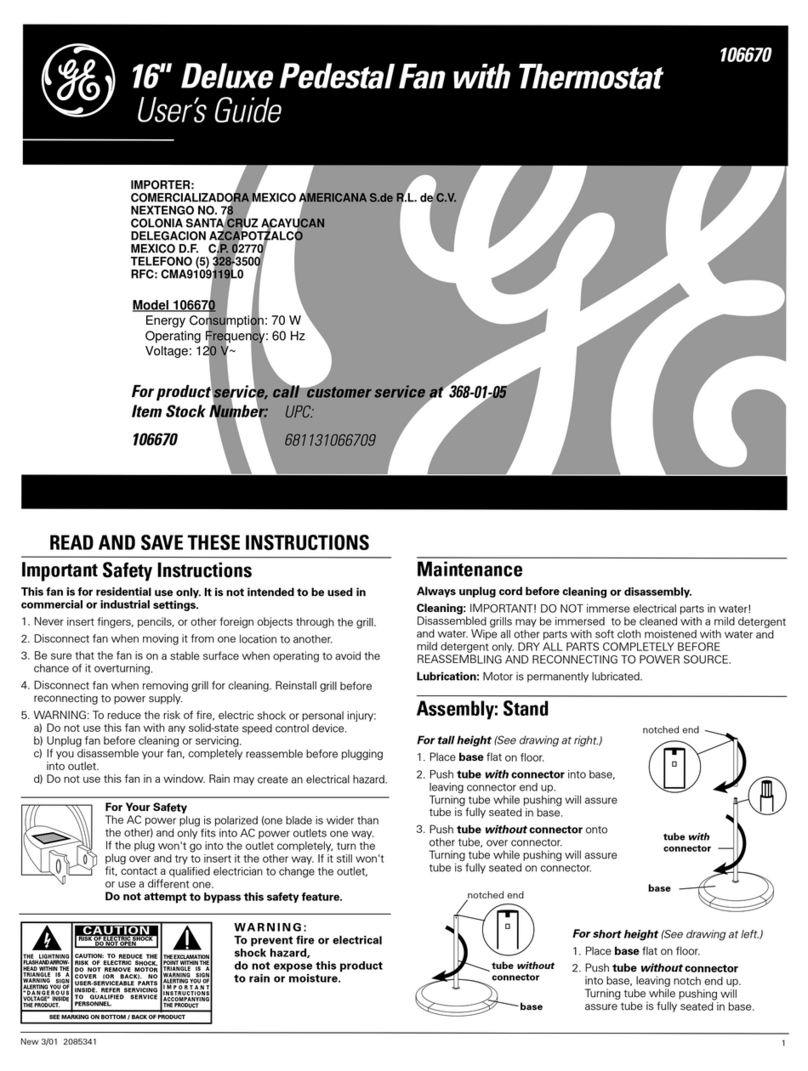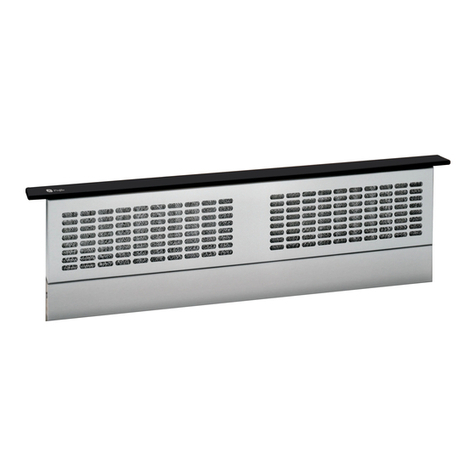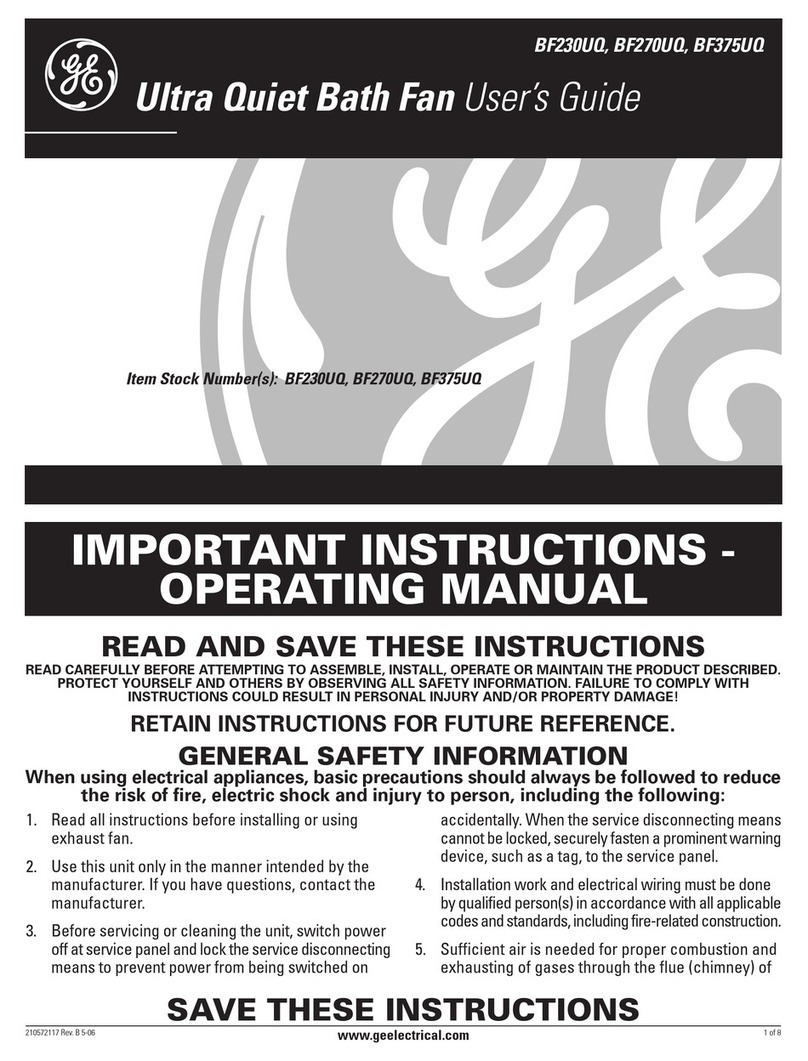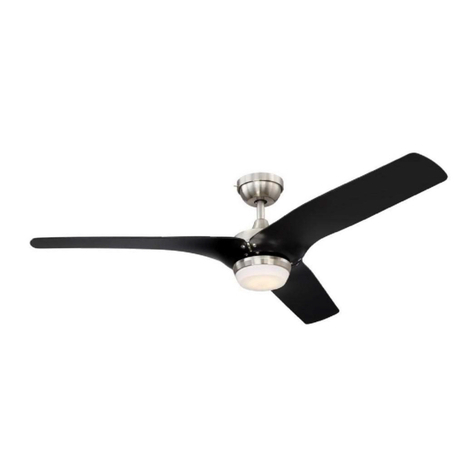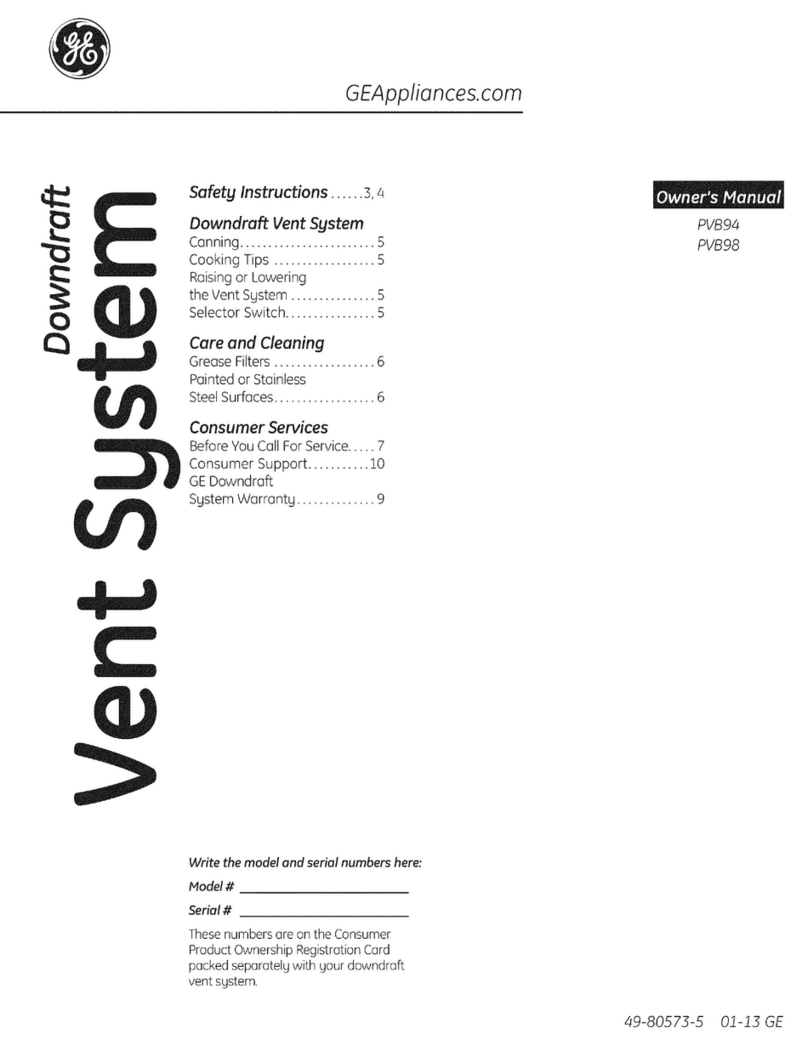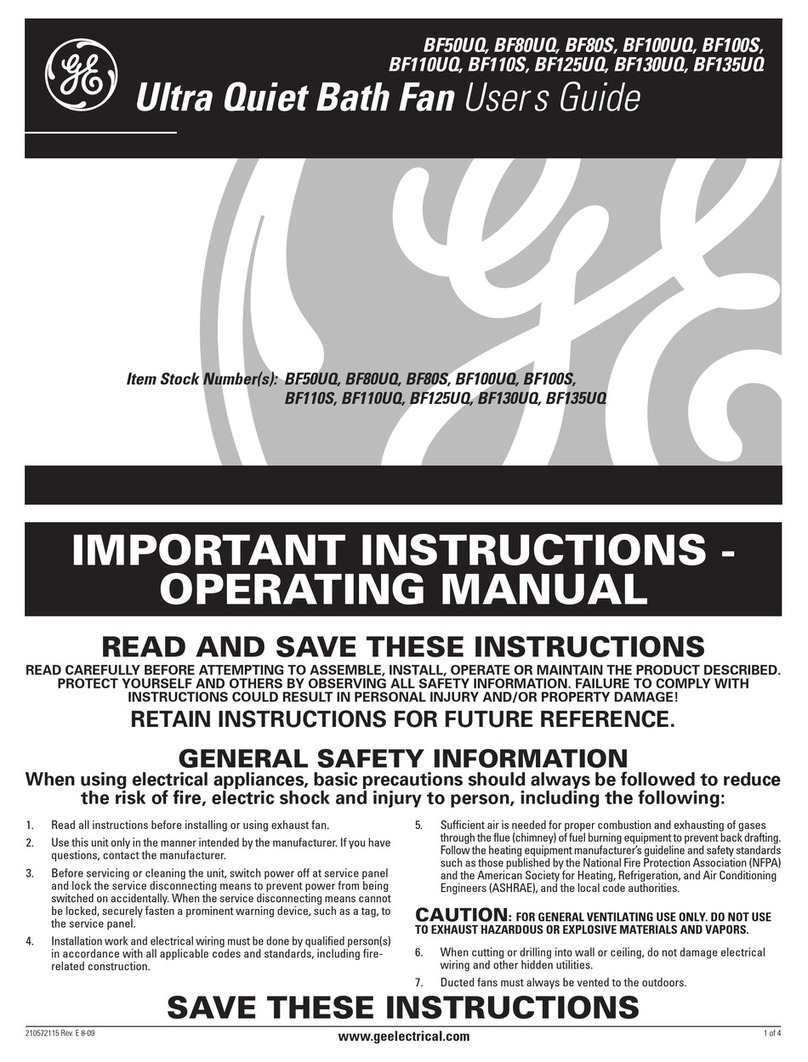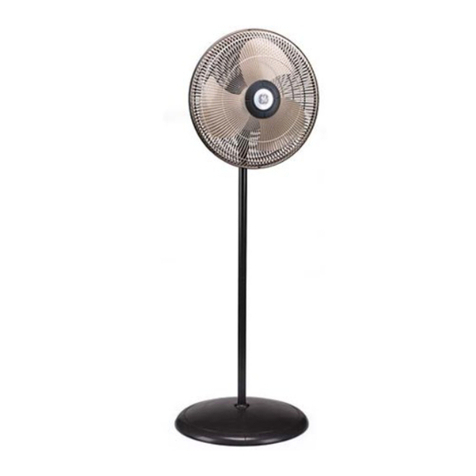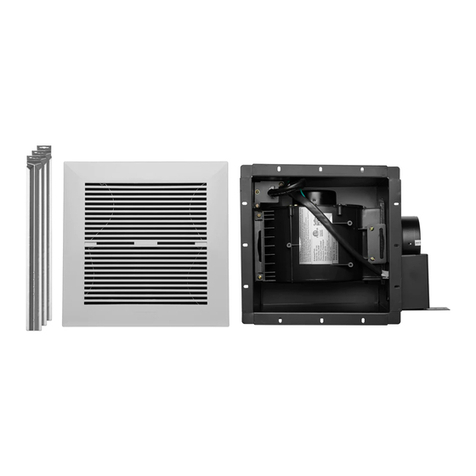
10
WARNING: to avoid possible electric
shock, be sure electricity is turned
off at the main fuse box before wiring.
NOTE: fan must be installed at
a maximum distance of 6 m (20
ft.) from the transmitting unit for
proper signal transmission between
the transmitting unit and fan’s
receiving unit.
CAUTION: do not use wall switch
with dimmer function.
WARNING: check to see that all
connections are tight, including
ground wire, and that no bare wire
is visible at the wire nuts, except for
the ground wire.
WARNING: electrical diagrams are
for reference only. Optional use of
any light kit shall be cUL listed and
marked suitable for use with this fan.
MAKING THE ELECTRICAL CONNECTIONS
Supply Circuit
Motor to receiver electrical connections: Connect the black
wire from the fan to black wire marked “TO MOTOR L” from
the receiver. Connect the white wire from the fan to the
white wire marked “TO MOTOR N” from the receiver. Connect
the blue wire from the fan to the blue wire marked “For Light”
from the receiver. Secure the wire connections with the
plastic wire nuts (O).
Receiver to house supply wires electrical connections:
Connect the black (hot) wire from the ceiling to the black
wire marked “AC in L” from the receiver. Connect the white
(neutral) wire from the ceiling to the white wire marked “AC
in N” from the receiver. Secure the wire connections with the
plastic wire nuts (H).
If your outlet box has a ground wire (green or bare copper),
connect it to the ground wire from mounting bracket and
ground wire from the fan motor assembly, secure the wire
connection with a plastic wire nut (H); otherwise connect
the ground wire from the fan motor assembly to the ground
wire from mounting bracket, secure the wire connection with
plastic wire nut (H).
WHITE
WHITE
BLACK
BLACK
BLUE
GREEN
BLACK BLACK
BLUE
WHITE
WHITE
H
R
V
Q
To install wire nuts, strip wires 1.9 cm (3/4
in). Line up wires in parallel, insert into
wire nut, hand tight wire nut by twisting
clockwise until snug. Tape around wires
and wire nut. After connecting the wires,
carefully tuck the wire connections and
wires into the canopy.
Loosen two (one of each across) of the
four screws (V) from the mounting bracket
(Q) and remove the other two. Remove
the motor assembly (R) from the hook of
mounting bracket (Q) and push up the
motor assembly (R) until the two screws (V)
on mounting bracket (Q) are engaged with
L type slot holes on canopy of the motor
assembly (R). Rotate the motor assembly
(R) slightly until the two screw heads are
in the L type slot holes. Install the two
screws previously removed and tighten all
four screws.
Fan Installation
Ground conductor
from ceiling
Ground wire from
mounting bracket
Ground wire from
the fan motor
assembly
BLACK for motor
BLUE for light
WHITE for neutral
Outlet box
M
WARNING: after making the
electrical connections, carefully
unhook the fan and hold the fan
firmly while attaching the fan to the
mounting plate.






